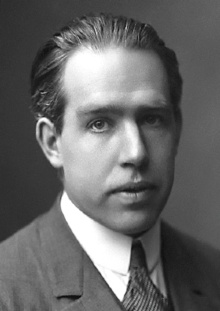In this work, Niels Bohr introduces and discusses the correspondence principle, which is an important concept in the development of quantum mechanics. The correspondence principle states that the classical limit of a quantum system must be equivalent to the corresponding classical system.
 Niels Bohr, Danish physicist and Nobel Prize winner, whose atomic theories revolutionized quantum mechanics. Discover his quotes and passions.
Niels Bohr, Danish physicist and Nobel Prize winner, whose atomic theories revolutionized quantum mechanics. Discover his quotes and passions.
More about Niels Bohr